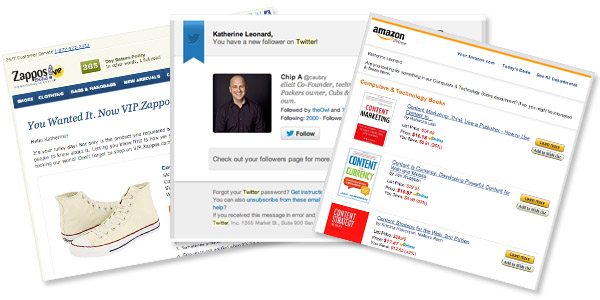
As an Internet user you’ve definitely received both transactional and bulk emails, but as a brand marketer do you know the differences between the two? The messaging, format and goals are different as are the laws that govern them. Let’s take a minute to go over which is which, and how they should be treated from the brand marketing perspective.
Bulk Email
The term bulk email applies to most of what we would typically think of as email marketing or that somewhat outdated term that is “email blast.” In layman’s terms, think of bulk email as one-to-many rather than one-to-one. These emails go to a large list or a segment of your list, and you would typically use a program like MailChimp, ConstantContact or AWeber to build, send and review for optimization. Here are a few examples of bulk email:
- Eater Chicago’s daily newsletter
- Dabble’s weekly list of upcoming classes
- lonelybrand’s weekly roundup of articles, The Digital Dispatch
 Transactional Email
Transactional Email
As MailChimp defines it, a transactional email is “anything that isn’t bulk.” It is a response to a user’s action, or in some cases, their lack of action. Receipts certainly qualify as transactional email, but a purchase does not necessarily have to be made for an email to be transactional rather than bulk. Here are a few examples of transactional emails:
- When a user makes a purchase, they get a transactional email confirming that purchase.
- When a user abandons their shopping cart, they get an email reminding them to come back and complete the purchase.
- When a user signs up for a social network, they get a transactional email thanking them for joining. A few weeks later, when someone pokes them on Facebook, they get an email notifying them of the poke.
- When a user signs up for your mailing list, they get an email confirmation.
You might also hear transactional emails referred to as automatic, triggered, personalized and one-to-one email. Popular services for transactional email include Mandrill and Mailjet.
